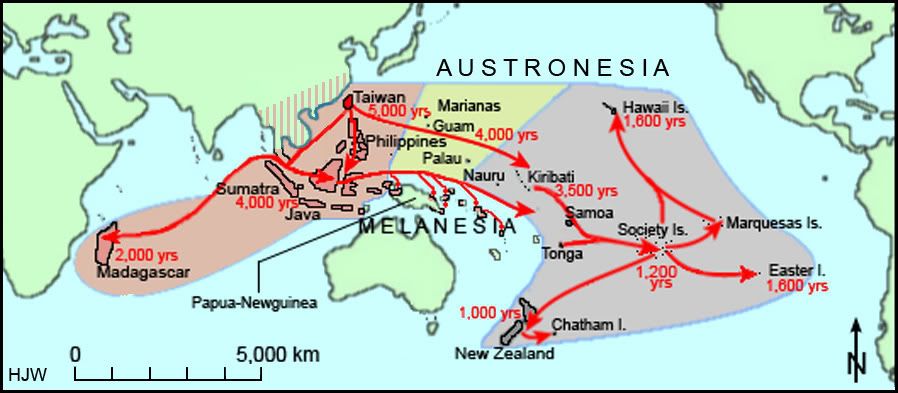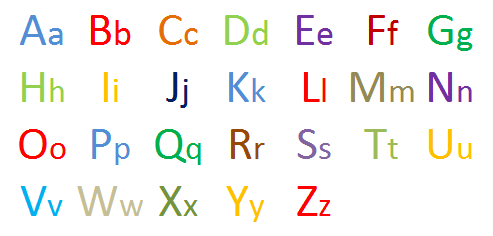1. Introduction
The introduction and application of ICT in language
learning has changed the landscape of education in general and language
learning in particular (Hartoyo, 2012). It means that in this era, the
development of technology is the important factor which influences every
particular thing in language teaching and learning processes, including
materials and media.
Students of twenty first century are different with
the twentieth century’s students. They follow the technology development every
time. They always use ICT, anytime, anywhere. It can be said that students are
smarter than teachers in using the technology. However, teachers as the
facilitator in the teaching and learning processes are demanded to be
innovative. Teachers are among the first parties responsible for a maintaining
a better understanding and competence in using ICT in their teaching activities
(Hartoyo, 2012).
To be innovative teachers, they should be able to use
various media in delivering their teaching materials. They have to be able to operate
various software and application of ICT. Those are to make sure that teachers
are not left behind their students.
To solve this problem, some schools ask their teachers
to be able to operate the common-used media in delivering teaching material,
Microsoft PowerPoint, that is. Schools hold teachers training in using
presentation media. As a result, most of teachers are familiar with this
application; however, they just able to use it commonly. Only a few of them are
able to innovate their teaching materials.
In order to make teachers more innovative in creating
language learning media, there is a newest application called Powtoon. It is
operated online. Teachers can create interesting media of language learning to
make their students more exciting to the teaching and learning process.
2. Objectives
In this essay the writer has two objectives to be
achieved as follows:
2.1. To find whether or not Powtoon can support teacher in creating language
learning media.
2.2. To find whether or not Powtoon can make students more interesting with
the language teaching and learning process.
3. Review of Related Literature
Media are the way of communicating information (Hornby, 2006). Media are used to express something in
the purpose of communicating. In this era, media are not only used in order to
inform people such in the newspaper, magazine, television, and radio but also
used to provide ideas in the vary sectors, such as business and school. In
school, media are used in the teaching and learning process. Here, the
existences of media support teachers in delivering the teaching materials.
Based on the development of technology, there are three
kinds of learning media that commonly used in the teaching and learning
process.
First, printed media are media that are produced on
paper or other material with a machine. For example: books, encyclopedia,
teaching materials, students’ worksheet, etc.
Second, audio-visual media are media that provide
materials soundly and visually. For example: tape-recorder, projector, etc.
Third, computer media are media that used
micro-processor in creating the materials. For example: the computer
application.
Actually, the use of media in the teaching and
learning process are very important especially in facing the improvement of
technology. As said by Reeves (1998), that there are two major approaches in
using media and technology in schools. First, students can learn ‘from’ media
and technology, and second, they can learn ‘with’ media and technology.
Learning ‘from’ media and technology is often referred to in terms such as
instructional television, computer-based instruction, or integrated learning systems.
Learning ‘with’ technology is referred to in terms such as cognitive tools and
constructivist learning environments.
In this case, the writer focuses on the first
approach. Students can learn ‘from’ media and technology. It means that teacher
should know more about media that can improve students’ interest in the
teaching and learning process. Teacher must not only have a sufficient
knowledge of ICT tools but also which to utilise them (Hartoyo, 2012).
In the language teaching and learning process, the use
of media is much needed. Four skills including listening, speaking, reading,
and writing need media in providing them. Moreover, teachers in Indonesia
commonly take advantages of presentation application such Microsoft PowerPoint
in delivering the materials. To say the least, nowadays, there are some
interactive presentation applications that can be used. Moreover, the newest
are supporting by various design and animation so that students will more
interest in the materials that is given and the teaching and learning process
in the class.
Powtoon was founded in 2012 in London by Russian-born
entrepreneur Ilya Spitalnik as a way for startups to create compelling
animations in the browser, without spending tens of thousands of dollars. This
is vital, as many startups operate on wafer thin budgets, and often lack the
funds to even pay for a marketing team, let alone for flashy adverts (Hughes, 2014).
Powtoon is a nice service for creating explanatory
videos through a drag and drop process. The videos that users create feature
digital paper cut-outs on a colorful background. This online tool let users
create videos in the style made popular by Common Craft. It provides drawings
of people and objects that users can arrange on blank canvas. After adding
their narration to arrangement users can publish their videos (Powtoon, 2013).
Powtoon is different with Microsoft PowerPoint.
Microsoft PowerPoint just allows people to create slideshows by dragging and
dropping onto a blank canvas, and building from that. It has become the
de-facto tool for creating presentations, despite the fact that most
presentations created with PowerPoint are painfully dull (Hughes, 2014). On the other hand, Powtoon allows users
to create beautiful presentations from the comfort of their web browser, whilst
restaining the same Powtoon feel and aesthetic that we all know. Powtoon is
captivating, it is its benefit. It can grab the attention of the audience and
make a memorable presentation.
Here are the steps to create a video in Powtoon.
·
Visit the website www.powtoon.com and login to your account. If you do not
have an account, you can create a free account.
·
Click Dashboard at the top of the
page. It will appear once you login to the website. This link will take you to
the Powtoon that you have created or give you the option to create a new one.
Your Powtoon can always be found on the dashboard.
·
When you click create you will be
taken to a new page to select a template for your presentation. You can use a
premade template or create your own presentation from a background template.
·
When putting together your movie or
slideshow, you have to use the directions in the layer to help your navigate.
·
When adding text, music, or graphics to
your Powtoon, you have the option to control when the text or image appears on
the slide. To control this, use the slider at the bottom.
·
Once your Powtoon is finished, you have the
option to share it, or export it (only to YouTube with a free account). Your
Powtoon will always remain in your dashboard whether you do any of these things
or not.
4. Analysis
Language learning media that are used in teaching and
learning process influence the success of it. In order to fulfill this success,
teachers are intended to be able to follow the development of technology. In
delivering materials, teachers can use Powtoon more than Microsoft PowerPoint.
Related to this case, teachers may have some questions, is it an effective
media that can be used for delivering the materials? Is it possible to make
students more excited in the teaching and learning process?
Powtoon is not as simple as its name. In creating
materials by using Powtoon, teachers have to have a good internet connection.
If their connection is bad, of course, some problem will happen. The
application will overload and when the video are exported into YouTube, of
course, it takes time. Moreover, if teachers want to use the video which have
been created as the learning media for their students, teachers have to
download it first from YouTube. However, Powtoon is more attractive than
Microsoft PowerPoint. It has good animation; teachers can design the video more
interesting than in the Microsoft PowerPoint.
In order to lead students interest in the teaching and
learning process, media is not the only one that can be used. The role of
teachers in the teaching and learning process is much needed. Teachers should
engage students while they do learning activities in the classroom. Teachers
should teach communicatively and interactively. To say the least, media is just
one of the facilitator in the teaching and learning process beside teachers. In
short, in order to make students more interest in the teaching and learning
process, media can be used to support teachers.
5. Summary and Recommendation
In line with the development of technology, of course,
the implementation of it is a must especially in the teaching and learning
process. Technology is very useful as the media to support teachers in
providing their materials. Teachers are able to make the teaching and learning
process more interesting by using media.
Language learning media have to improve in order to
make students more excited in the teaching and learning process. So teachers
are intended to know about the ICT tools, both hardware and software. Teachers
should be an innovative facilitator in the teaching and learning process.
Powtoon as the newest application in delivering
presentation is very helpful for teachers. It can support teachers to make the
teaching and learning process more excited. Then, students will be more
interest in the teaching and learning process.
The writer recommends teachers to know the development
of technology more than students. They should update the application that can
support their teaching and learning process. They should update any software
which can be used as the interactive media in delivering the teaching materials.
6.
References
Hartoyo, M. P. (2012). ICT in
Language Learning. Semarang: Pelita Insani Semarang.
Hornby, A. S. (2006). Oxford Advanced Learner's
Dictionary of Current English. Oxford: Oxford University Press.
Hughes, M. (2014). Retrieved July 1, 2014, from
MakeUseOf: http://www.makeuseof.com
Powtoon. (2013). Retrieved June 29, 2014, from Media
and Learning: http://www.media-and-learning.eu





















